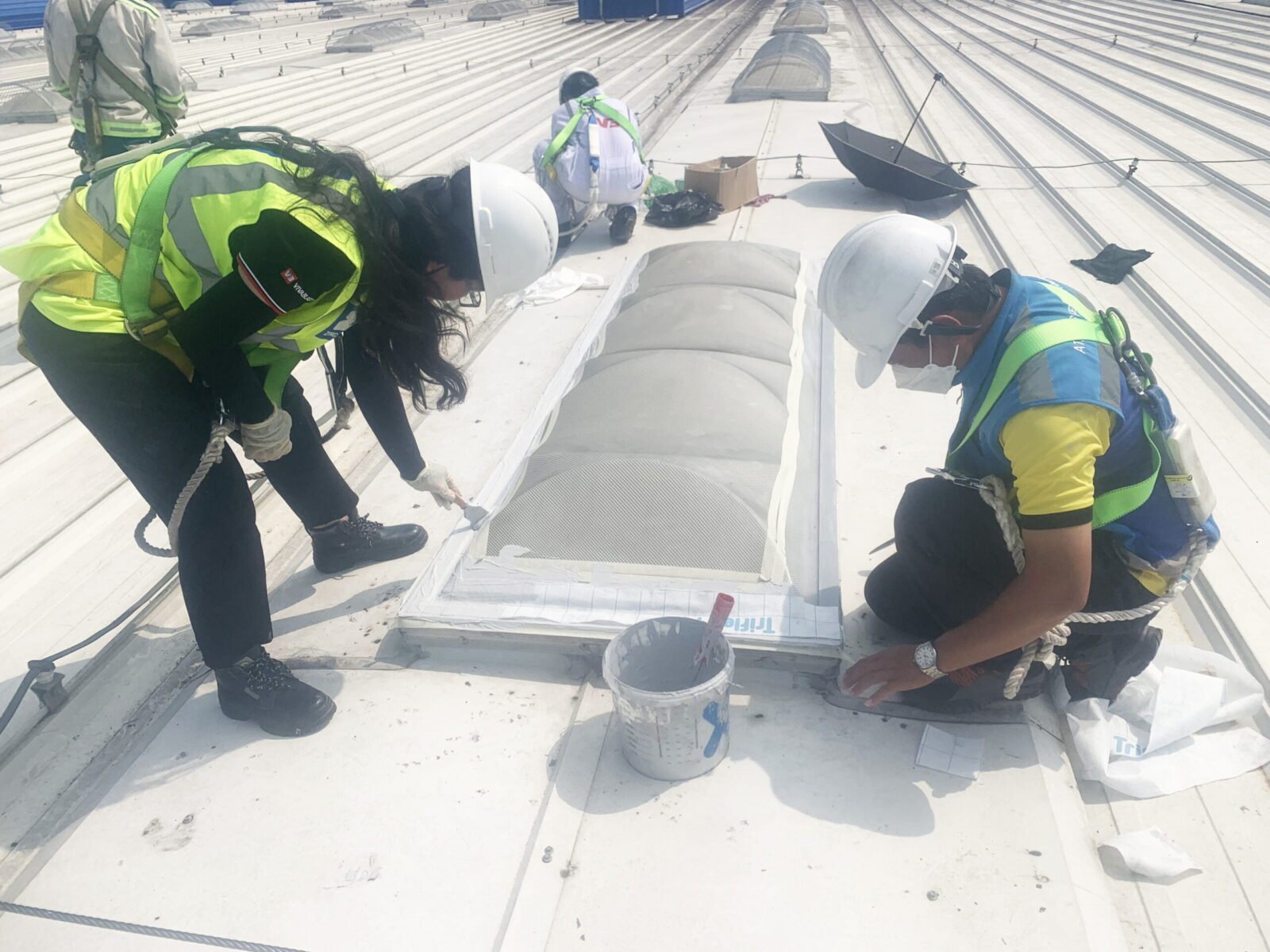Waterproofing is one of the most critical aspects of any construction project. From residential buildings to large-scale infrastructure, ensuring that a structure is protected from water ingress is vital for its durability, safety, and longevity. Water damage can lead to structural weakening, mould growth, and even the complete failure of buildings if not properly addressed. This is why advanced waterproofing solutions are essential in modern construction, ensuring that both new builds and renovations can withstand the elements for years to come.
In recent years, the construction industry has seen significant advancements in waterproofing technologies. These innovations not only provide better protection against water but also make the application process more efficient, sustainable, and cost-effective. In this blog, we’ll explore some of the most innovative waterproofing solutions in construction, and how they are transforming the way projects are designed and executed.
1. The Importance of Effective Waterproofing
Before diving into the latest innovations, it’s essential to understand why waterproofing is such a crucial part of construction projects. Water is one of the most destructive elements a building can face. Whether it’s rainwater, groundwater, or humidity, moisture can infiltrate a structure and cause severe damage over time. This is particularly true for below-grade areas like basements, foundations, and tunnels, where water can easily accumulate if proper precautions are not taken.
Without effective waterproofing, structures are prone to a variety of issues, including:
● Structural damage: Water can erode concrete, weaken steel reinforcement, and cause cracks in walls and foundations.
● Mould and mildew: Excess moisture creates the perfect environment for mould and mildew growth, which can lead to health risks and affect indoor air quality.
● Deterioration of materials: Prolonged exposure to moisture can cause materials such as wood, insulation, and plaster to degrade or warp, leading to costly repairs.
● Compromised insulation: Water intrusion can damage insulation materials, reducing energy efficiency and leading to increased heating and cooling costs.
Given these risks, investing in high-quality waterproofing solutions is essential to protect a building from potential long-term damage. Thanks to modern innovations, there are now more effective and reliable methods than ever to achieve durable waterproofing.
2. Advanced Membrane Technologies
One of the most widely used methods for waterproofing in construction is the application of waterproof membranes. These membranes form a protective barrier between the building materials and external moisture, preventing water from penetrating the structure. Over the years, membrane technologies have advanced significantly, offering improved performance, flexibility, and ease of installation.
Liquid-Applied Membranes
Liquid-applied membranes are an innovative solution that has gained popularity due to their versatility and seamless application. Unlike traditional sheet membranes, which require precise cutting and installation, liquid membranes are applied directly to the surface using a brush, roller, or spray. Once applied, the liquid cures to form a continuous, seamless barrier that conforms to the shape of the structure.
Liquid-applied membranes are particularly effective in areas with complex geometries, such as irregularly shaped roofs or balconies, where traditional membranes may be difficult to apply. Their flexibility allows them to accommodate movement within the building, reducing the risk of cracks or gaps forming over time.
Another advantage of liquid-applied membranes is their fast application and curing times, which can significantly reduce construction schedules. Many of these membranes are also resistant to UV radiation, chemicals, and extreme temperatures, making them suitable for a wide range of environments.
Self-Adhesive Membranes
Self-adhesive membranes are another innovation that has simplified the waterproofing process. These membranes come with a pre-applied adhesive layer, allowing them to be easily affixed to surfaces without the need for additional bonding agents. This reduces installation time and ensures a secure, watertight seal.
Self-adhesive membranes are often used in roofing, foundation walls, and below-grade applications, where a reliable waterproof barrier is essential. Their ease of installation makes them a cost-effective option for both new construction and retrofitting projects.
3. Integral Waterproofing Systems
While membranes provide an effective external barrier against water, some projects require an additional layer of protection within the building materials themselves. This is where integral waterproofing systems come into play. These systems involve adding waterproofing admixtures to the concrete mix, making the concrete itself resistant to water penetration.
Integral waterproofing systems work by filling the microscopic pores and capillaries within the concrete, preventing water from seeping through. This method is particularly effective in structures that are exposed to high levels of moisture or water pressure, such as tunnels, water treatment plants, and basements.
One of the key advantages of integral waterproofing is that it provides protection throughout the entire thickness of the concrete, rather than just on the surface. This makes it more durable and less susceptible to damage over time. Additionally, integral waterproofing eliminates the need for external membranes, reducing installation time and material costs.
4. Waterproofing Tapes and Sealants
Another innovative solution in the waterproofing industry is the use of tapes and sealants, which offer targeted protection in joints, seams, and cracks. These products are particularly useful for sealing gaps between different building materials or in areas prone to movement, such as expansion joints.
Waterproofing tapes are made from highly elastic materials that can stretch and contract without breaking, ensuring a secure seal even in dynamic environments. Sealants, on the other hand, are typically applied as a flexible, adhesive material that fills gaps and prevents water from entering.
Tapes and sealants are often used in combination with other waterproofing methods, such as membranes or coatings, to provide a comprehensive protection system. For example, they can be applied around windows, doors, and other penetrations to ensure a watertight seal.
5. Green Waterproofing Solutions
With sustainability becoming an increasingly important focus in construction, there has been a growing demand for eco-friendly waterproofing solutions. Many manufacturers are now developing products that not only provide effective protection against water but also reduce the environmental impact of construction projects.
One such innovation is the use of green roofs, which combine waterproofing membranes with vegetation to create an environmentally friendly roofing system. Green roofs provide multiple benefits, including natural insulation, stormwater management, and improved air quality, while also protecting the underlying structure from water damage.
Additionally, some waterproofing materials are now being produced with recycled or renewable content, further reducing the environmental footprint of construction projects. These sustainable solutions align with the industry’s push towards greener building practices, helping to minimise waste and energy consumption.
6. The Role of Expert Solutions
In any waterproofing project, it’s crucial to use high-quality products that are designed to meet the specific needs of the structure and environment. Reputable manufacturers like Fosroc offer a wide range of innovative waterproofing solutions tailored to different types of projects, from high-rise buildings to underground tunnels.
Choosing the right waterproofing system requires careful consideration of factors such as the location, weather conditions, and materials involved. Consulting with waterproofing experts can help ensure that the most suitable solutions are selected and applied correctly, reducing the risk of future water damage and costly repairs.
Conclusion
Waterproofing is a vital aspect of any construction project, ensuring that buildings remain protected from the damaging effects of water ingress. With the advancements in waterproofing technology, construction professionals now have access to a wide range of innovative solutions that offer superior protection, durability, and ease of application.
From liquid-applied membranes and integral waterproofing systems to eco-friendly solutions, these technologies are transforming the way waterproofing is approached in modern construction. By investing in the right waterproofing methods and products, companies can safeguard their projects, enhance the lifespan of structures, and reduce long-term maintenance costs. Whether it’s a large infrastructure project or a residential build, waterproofing is an essential step in ensuring the durability and sustainability of any construction endeavour.












Leave a Reply